Welcome to Curaçao, one of the Caribbean’s most colorful destinations. Tucked in the Southern Caribbean off the coast of South America, Curaçao is decidedly unique. Its capital, Willemstad, feels like a European capital (perhaps because the island is still considered a country within the greater Kingdom of the Netherlands). The island is bright, airy, and fantastically tropical, with Easter-egg colored buildings and cobblestone streets around every turn.
The blend of Caribbean and Dutch influences makes it a fantastic place to visit, and some of the best things to do in Curaçao relate both to the ocean and to the island’s history. The suggestions below will give you a good idea of the variety of adventure available on this amazing island.
Unwind at Mambo Beach
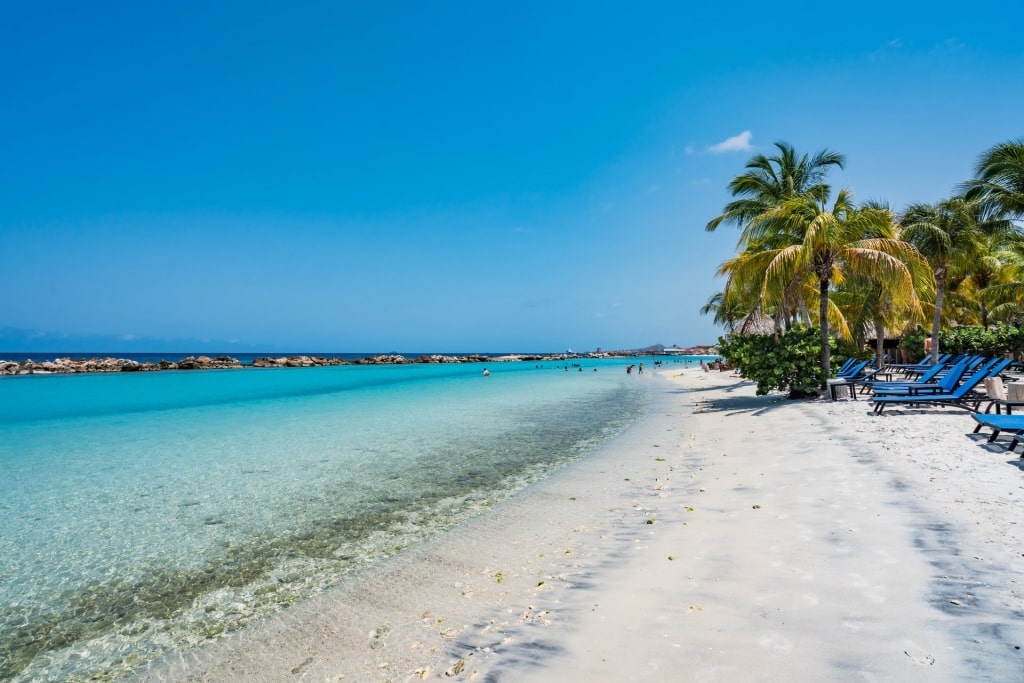
Mambo Beach
Mambo Beach is just as fun as the name implies and is one of the best beaches in Curaçao. With calm water ideal for swimming and floating, you could laze the day away in the surf. But if you’re the kind of person who gets antsy after lounging for too long, you’ll find plenty to do just off the soft sand.
Play beach tennis, rent snorkel equipment, or stroll along the cute shops on Mambo Beach Blvd. No matter how you spend the afternoon, make time to sample a piña colada at a beach bar—it’s one of the best things to do in Curaçao after a day in the sun.
Go Underground in Hato Cave
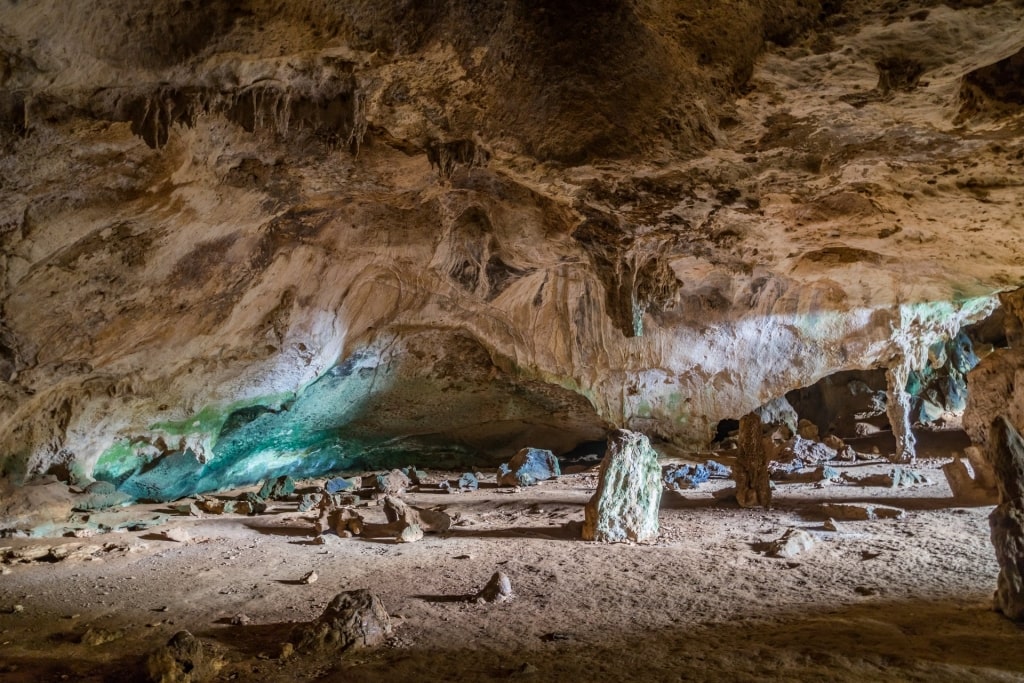
Hato Cave
As with many islands, Curaçao was formed through centuries and eons of volcanic activity and lava flows, which eventually piled up to form the island’s landmass. And if you’ve studied geology, you’ll know what else comes with lava flows: caves.
Curaçao has many caves on the island, but the largest and most impressive is Hato Cave. On a Hato Cave tour, you’ll spend about 45 minutes in the 300,000-year-old cave, learning about the various stalagmite and stalactite formations as well as the history of the cave. It’s well lit and has a smooth path, but if you’re afraid of bats, you may want to opt instead to stroll through the cactus garden outside the cave.
Swim with Dolphins at the Dolphin Academy
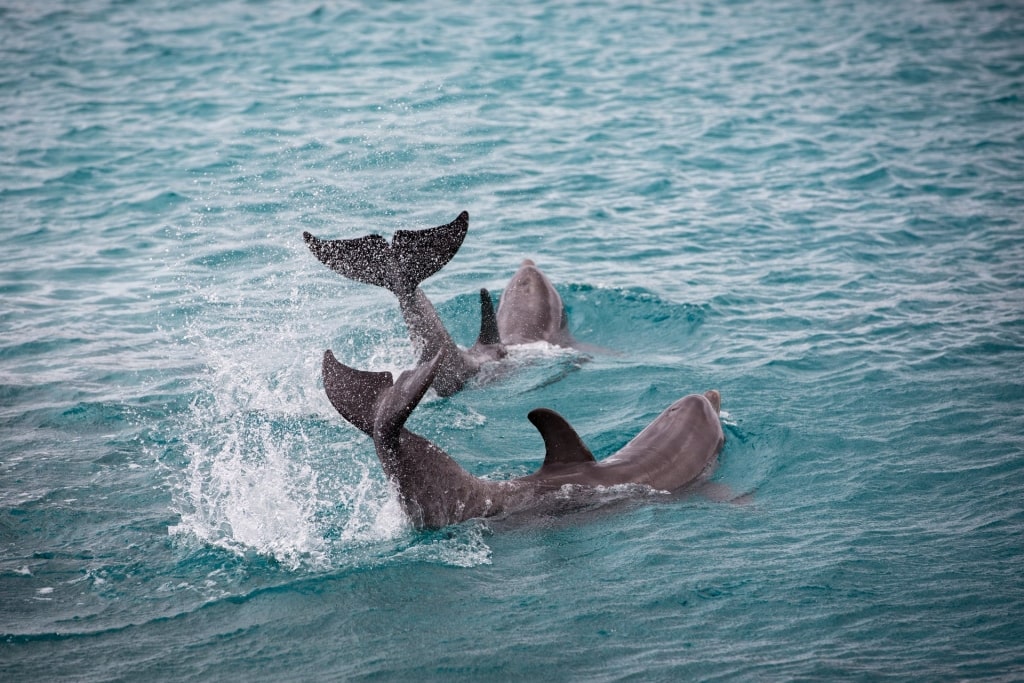
Dolphin Academy
Part of the popular Sea Aquarium Park, the Dolphin Academy is your chance to get in the water with some of the island’s most popular marine residents. There are various programs available, including one for people who want to stay in water no deeper than their waists, but one of the very best is the dolphin snorkel. You’ll be able to free dive and play with the dolphins just below the surface as they play in their lagoon. An instructor will be on hand to answer questions and teach you about the dolphins’ advanced echolocation abilities.
While at the Sea Aquarium, leave a bit of extra time to wander around the other facilities, including a huge walk-through aquarium, sea lion encounters, and even chances to feed sharks and flamingos. Scuba diving dolphin encounters are also an option for adults with open-water certifications.
Snorkel on a Sunken Tugboat
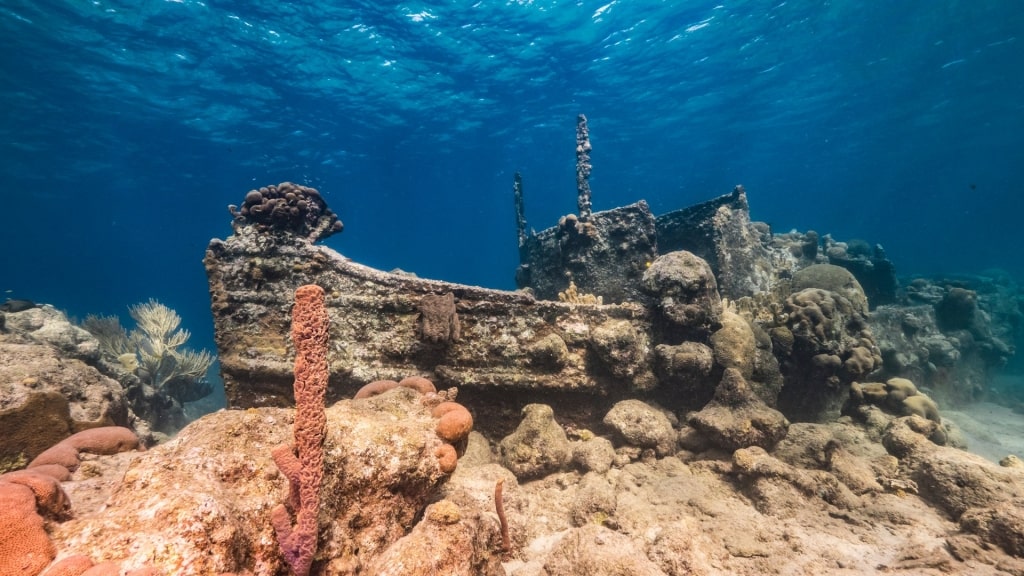
Tugboat wreck
One of the very best things to do in Curaçao for anyone who likes the ocean is to jump in the water and go snorkeling at Caracas Bay. The area around the peninsula is protected as a national park, which means fishing and industry are quite regulated and the underwater marine populations are thriving. There are multiple areas to see underwater, all of which offer different sites.
Head into the water just off Tugboat Beach, where you’ll find a sunken tugboat in around 15 to 20 feet of water. It’s been there for about 30 years, so it’s well established as a habitat for different kinds of fish.
There are a few other snorkel sites in the bay—Director’s Bay and Small Wall are two of the most well known—and there’s a chance of seeing exotic fish, lobsters, eels, octopus, sea turtles, and more at any of the sites.
Hike at Boca Tabla National Park

Boca Tabla National Park
If you love the beach but aren’t willing to forgo a workout just because you’re on vacation, spend the morning with an active hike through Boca Tabla National Park in the northern part of the island. The park’s beautiful beaches and large waves crashing against the cliffs make it one of the most captivating places on the island.
There are several hikes in the park, including the Boka Pistol Trail (ideal for watching the huge waves smash into the coastline) and the Boka Wandomi Trail, which leads past lava flows to a natural bridge. Taking landscape photos here (especially around sunset) is one of the most popular things to do in Curaçao for traveling photographers.
Taste Blue Curaçao at the Landhuis Chobolobo
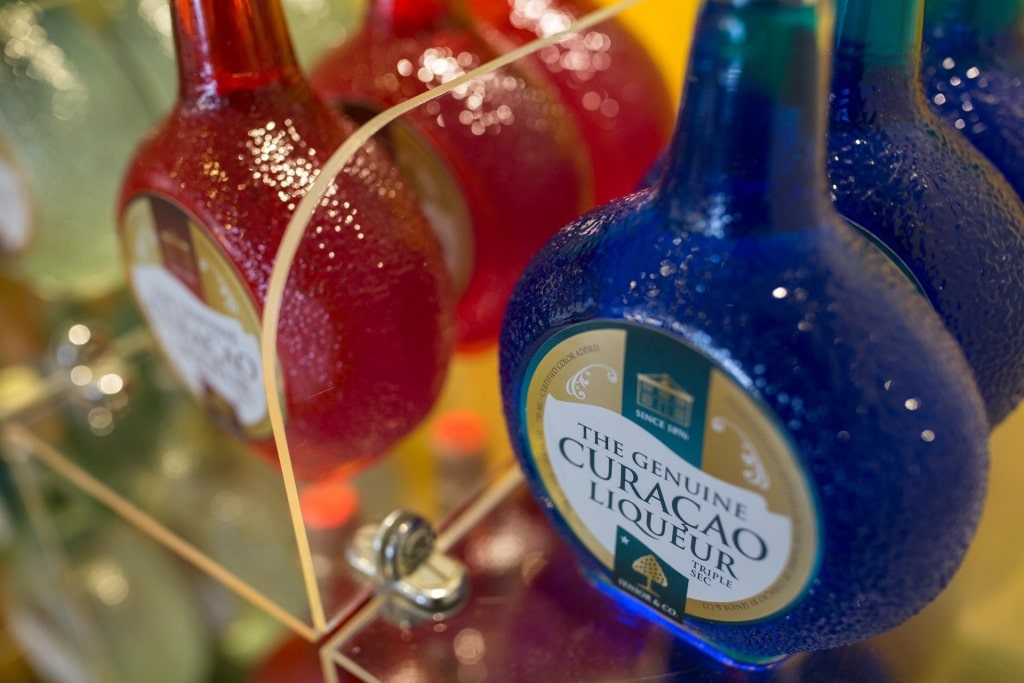
Blue Curaçao
The first thing you’ll notice about the Landhuis Chobolobo Distillery is no doubt its sunshine-yellow facade, which matches the bright colors found throughout Willemstad. Here, you can tour the distillery, learn how to make cocktails, or just swing by the gift shop to pick up some souvenirs for folks back home.
If you’ve got extra time, swing by the Landhuis Chobolobo cocktail bar to sample some of the island’s most creative cocktail creations. Of course, you can try island classics like a Blue Lagoon or Cosmopolitan, but if you’re feeling daring, opt instead for one of Landhuis Chobolobo’s specialty cocktails created by the bar staff and not found anywhere else on Curaçao.
Learn About Native Plants at the Dinah Veeris Herb Gardens
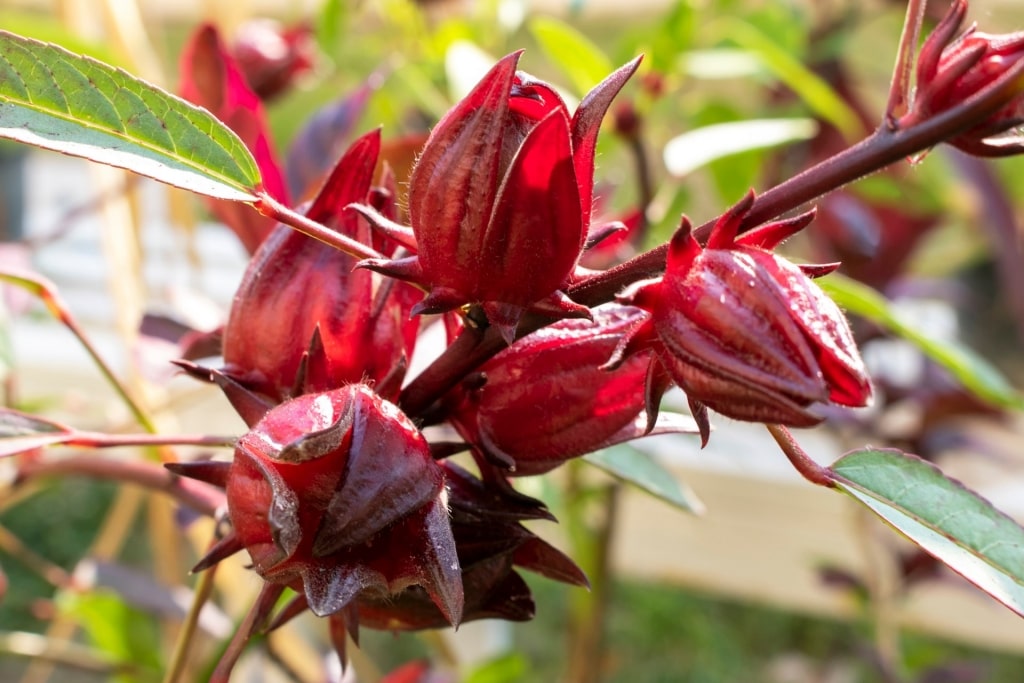
Dinah Veeris Herb Gardens
If you love plants, herbal remedies, or just learning about local knowledge, stop by the Dinah Veeris Gardens. Dinah Veeris is one of the island’s most well-known herbal healers and teachers, and she opened the garden in 1991 as a home base for her knowledge. Along with her team, Dinag grows more than 300 species of native plants and herbs, many of which she uses to make the organic products sold on-site.
The garden is also called “Den Paradera,” meaning “the place you want to stay.” Taking a stroll past the plants is one of the best things to do in Curaçao if you’re interested in botany, but fortunately, you can still find her products at shops around Willemstad if you’re unable to make it out to that part of the island.
Shop for Local Gifts at Rif Fort Village
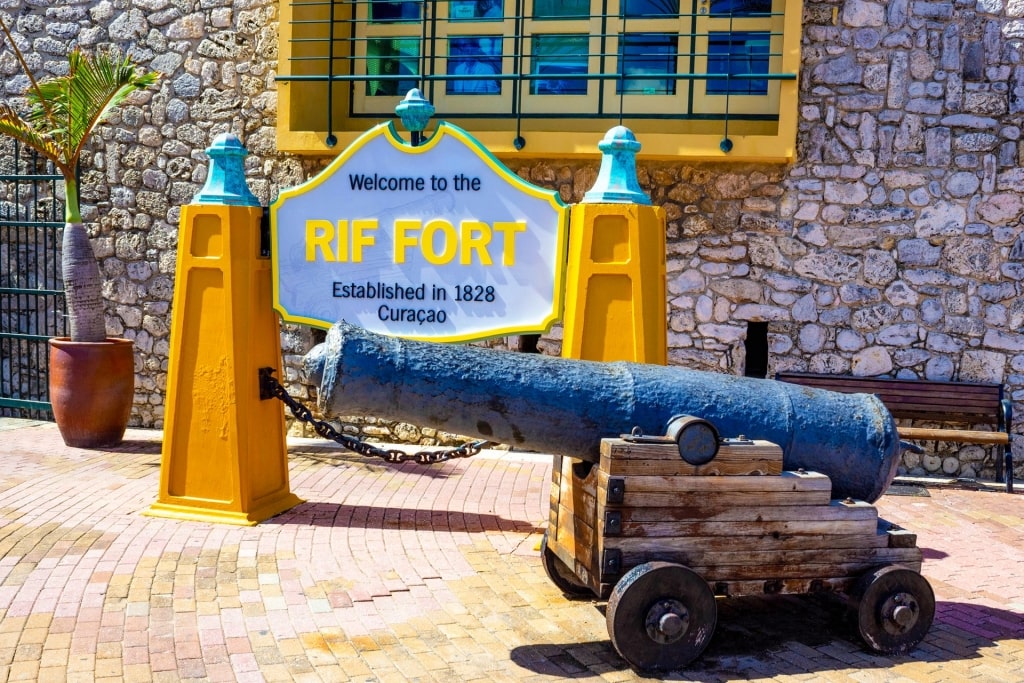
Rif Fort Village
Wandering through Rif Fort Village is one of the best things to do in Curaçao whenever you need a break from the beach. Built in the 1800s, it was originally a fort to protect the island, which explains the dozens of cannons and thick, tall stone walls. However, now that the threat of a pirate invasion is gone, it’s been converted into a shopping area and a UNESCO World Heritage Site.
In addition to souvenir shops and artisan boutiques, Rif Fort Village has plenty of great restaurants, live music, and entertainment on weekend evenings. If shopping isn’t your thing, you’ll be happy to know there’s both a museum and interactive displays about the fort and its history.
Sunbathe at Knip Beach
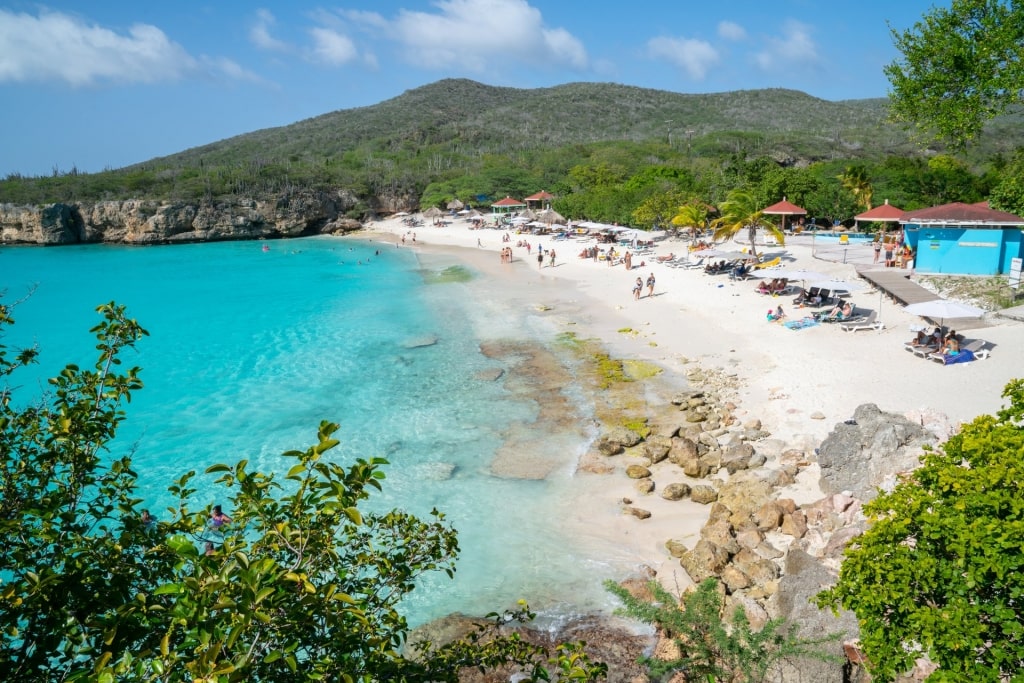
Knip Beach
For a lazy day in the sun, you can’t do any better than Knip Beach. It’s one of the Caribbean’s most beautiful beaches owing to its geography: it’s a sandy stretch of beach bookended by two rocky cliffs. While the beach is shallow, soft, and sandy, there are rocky and reefy sections underwater near the rock cliffs where it’s possible to see all kinds of colorful fish, either by snorkeling or wading.
Knip Beach doesn’t have much in the way of restaurants or beach bars, so it’s best to bring along everything you think you might need. However, in peak tourist season and on summer weekends, you’ll often find locals with food carts selling homemade snacks, drinks, and beach treats like ice cream. Bring a few extra bucks with you as it’s a great place to try some of the best food in Curaçao.
Learn about Curaçao at the Museum Kurá Hulanda
The Museum Kurá Hulanda chronicles the history of the peoples who built Curaçao. The museum takes a deep dive into the island’s human migratory history, colonization, and West African influences. It also has an extensive collection of relics and art from various cultures and periods.
The museum’s entrance fee includes a guide to the various displays. You can also arrange a tour if you call the museum a day or so in advance.
Shop at the Curaçao Floating Market

Curaçao Floating Market
Take in all the color and bustle of Curaçao’s floating market, located in the fashionable Punda neighborhood along Sha Caprileskade, near the Queen Emma pontoon bridge.
The market is quite a sight. Wooden boats arrive every morning from Venezuela on the South American mainland, laden with lush pineapples, plantains, papayas, avocados, and fresh fish.
Whether or not you’re here to shop, it’s a great photo opportunity and a fascinating glimpse of local life. Come earlier, when the stalls are filled with produce and the locals are out stocking up on provisions.
Step Back in Time at Fort Amsterdam

Fort Amsterdam
Solid Fort Amsterdam, painted in a bright, distinctive yellow, is the oldest of Curaçao’s eight forts and is protected as a UNESCO World Heritage Site.
It was built mainly by slaves in the mid-17th century by the Dutch West India Company to defend the island against the Spanish, from whom the Dutch had seized the island. You’ll see it at the entrance to the harbor, guarding Sint Anna Bay.
In the beginning, Fort Amsterdam housed the residents of what’s now Willemstad, although as the population expanded, the city outside the thick walls of the citadel developed.
Today, it’s the seat of the island’s government and the residence of the governor. Inside the walls, you can also visit the island’s oldest church, built in 1769.
Admire the View From Queen Juliana Bridge

Queen Juliana Bridge
The Queen Juliana Bridge is quite a sight, spanning 1,640 feet and standing 180 feet over Sint Anna Bay around which Willemstad is built.
The main reason to visit the four-lane bridge is for the views, which stretch across the neighborhoods of Punda, Otrobanda, and the Schottegat. You’ll get great shots from here of the gabled baroque buildings in brilliant shades of turquoise, yellow, and sunset orange that line the waterfront.
Play Castaway on Klein Curaçao

Klein Curaçao
Some 15 miles off the coast of Curaçao, Klein Curaçao, or “little Curaçao”, is an uninhabited speck of an island.
It’s surrounded by extraordinary powdery white beaches and Caribbean coral reefs that teem with aquatic life, including sea turtles. If there were ever the perfect desert island, this is it.
The island hasn’t always been such a dreamy setting. In the late 19th century, it was mined for phosphate, which degraded the landscape and left the island uninhabitable. The old pink Klein Curaçao Lighthouse, a ruin that’s under renovation, stands in the middle of the island. Elsewhere, the landscape has returned to its natural state.
Gaze at Punda’s Street Art

Punda
Punda is one of the prettiest neighborhoods of Willemstad. The streets are lined with colorful houses, quaint bars, open-air cafés, and quirky shops.
The Punda district is also famed for its street art, where swirls of color, artistic expression, and political statements tell the story of Curaçao and its history.
Join a guided walking tour to learn more about this enchanting area. Many of the best murals are hidden down sleepy alleys, and a guide will point out the best ones. Bring a camera and capture this dazzling art; exploring Punda is one of the best things to do in Curaçao.
Learn About Island History at the Curaçao Museum

Curaçao Museum
Head to Otrobanda to learn about every aspect of the island at the Curaçao Museum, housed in a colonial-era building. Inside, you can take a trip back through history to learn about the island’s formation, the indigenous people who lived here before the Europeans arrived, and the slaves who built much of what you see around the island today.
You’ll see how the slaves lived and what happened after the abolition of slavery. The museum is also packed with art, antique furniture dating back to the 18th century, and historic maps and sea charts of the Caribbean.
There’s also a carillon (a bell organ) with 47 bells, and the cockpit of the Snip, which was the first aircraft of Dutch airline KLM to cross the Atlantic in 1934.
Stroll Pietermaai District

Pietermaai District
Pietermaai is a historic neighborhood of Willemstad, east of Punda, that’s been inhabited since the 17th century. It’s named after a Dutch ship’s captain, Pieter de Meij, and was once the fashionable area in which merchants, bankers, and ships’ captains had lavish mansions constructed by slaves. This was also Willemstad’s theater and dining district.
When the island’s fortunes changed with the abolition of slavery and later, the discovery of oil in a different area, the colonial-era buildings were abandoned and left to decay.
Pietermaai has since found a new purpose as an area of chic hotels, cafés, and fine dining restaurants. Some of the old mansions, though, remain in a dilapidated state and are covered with murals and street art that provide an insight into the island’s history.
Enjoy a Taste of Africa at the Ostrich Farm

Ostrich Farm
If you’re in the mood for a break from the beach, head to Curaçao’s Ostrich Farm, where these powerful, flightless birds are raised for their meat, eggs, and feathers in what feels like a tiny slice of Africa in the Caribbean.
You can tour the farm in a safari truck with a chance to touch and even feed these impressive birds. Emus, crocodiles, and pot-bellied pigs add to the farm’s population.
Part of the experience is to dine at the farm’s Zambezi restaurant, where you can sample southern African cuisine, from samosas to ostrich omelets made from the birds’ enormous eggs, and ostrich burgers. The meat, incidentally, is supposed to be low in fat and much healthier than beef.
Watch Life Go By at Queen Emma Bridge

Queen Emma Bridge
The 1888-built Queen Emma bridge connects Willemstad’s two areas of Punda and Otrobanda. What’s interesting about it is that this is a pontoon bridge, supported by 16 pontoons that can swing apart to allow boats and ships through into Sint Anna Bay. It’s known locally as the “swinging old lady”.
Take up a waterfront position at one of the many cafés here and watch the world go by as yachts and bigger vessels come and go. If you want to cross to the other side and the bridge is open, just hail a water taxi; the ride takes no time and is free.
Enjoy the Peace of Playa Jeremi

Playa Jeremi
This pretty little cove has no facilities, but the views are beautiful and the water is spectacularly clear. There’s no shade, so it’s better to go later in the day when the sun is lower in the sky.
You can access the beach via rock-cut steps from the parking area. Playa Jeremi is rarely crowded, as there’s nothing here, but it’s a great spot for snorkeling in Curaçao. You could also bask on the coral and volcanic sand and listen to the sound of the waves.
Visit the Savonet Museum

Savonet Museum Photo by JERRYE AND ROY KLOTZ MD on Wikimedia Commons, licensed under CC BY-SA 3.0
Housed in a simple, gabled plantation house, painted in the island’s characteristic yellow color and part of the Christoffel National Park, this museum provides an insight into the lives of the slaves who worked the plantation.
You’ll also learn about the Arawaks, who were here before the Europeans, and the more modern human and political history of the island, which achieved independence in 2010.
Gaze at Coral Formations from Playa Kalki

Playa Kalki
Playa Kalki is known by local divers as “Alice in Wonderland” thanks to the strange, mushroom-shaped coral formations just off the beach. You can see them whether you snorkel or do a full dive.
The beach is small, and you’ll find a roped-off area where there’s a floating platform tethered to the sea bed with ropes, which you can use to make your way down to the dazzling coral gardens. There’s also a snack bar and a dive shop at the beach.
Admire Art at Landhuis Habaai
This 18th-century plantation house has a colorful history. It was inhabited originally by Sephardic Jews who had relocated from Brazil and Amsterdam. Then, it was at the heart of the Jewish Quarter of Willemstad.
It was also used as a residence for visiting VIPs, a girls’ boarding house, and an orphanage. At the beginning of the 20th century, the house was a straw factory that produced Panama hats.
Now, Landhuis Habaai is privately owned and has been carefully renovated. It houses an art gallery, the Gallery Alma Blou, showcasing Caribbean art, sculpture, ceramics, and jewelry. There are rotating exhibitions and cultural events, so it’s worth popping in even if you’ve been before.
Snap a Selfie on Kokomo Beach

Kokomo Beach
Beach Boys fans will no doubt want to make their way to Kokomo, even though the lyrics of the song suggest that Kokomo is somewhere off the Florida Keys. Nonetheless, Curaçao cashes in on the hit, with an Insta-worthy Kokomo sign above two swings positioned in the turquoise shallows.
Kokomo is decidedly cool and popular with both locals and expats. There’s a bar and restaurant, live music, loungers (for a fee), beach massage, and a dive shop. Palm trees swaying gently in the breeze and dazzling white sand complete the picture.
Shop at Sambil Curaçao
If you’re in the mood for some retail therapy, head to Sambil Curaçao, an impressive mall packed with international labels as well as bars and a food hall. You’ll find brands including American Eagle, Bath & Body Works, Calvin Klein, MAC, Tommy Hilfiger, and Victoria’s Secret.
The food hall is packed with dining options, from outlets selling Dutch pancakes to Tex-Mex and Caribbean cuisine. There’s a kids’ play area, too, and a bowling alley. Sambil can be a great option if you encounter a rainy day.
Learn About Miraculous Aloe Vera

Aloe Vera Farm
Aloe vera grows wild all over the ABC Islands, but at the Aloe Vera Farm, it’s produced on a commercial basis and turned into the Curaloe brand of beauty products.
The gel is believed to have multiple healing properties, aiding everything from acne to sunburn and even used as a mouthwash.
You can book a tour of the farm, which includes a nature walk and a behind-the-scenes tour of the factory to see how the products are created. There’s a chance to try aloe vera ice cream and to sample and buy some of the products.
Buy a Piece of Local Art
There’s nothing like artwork in the bright, joyful colors of the Caribbean to remind you of your sunlit vacation. A great memento of your time in Curaçao is a piece by local artist Nena Sanchez, whose beautiful, vivid images of fish, birds, Caribbean architecture, and people will bring a smile to your face for years to come.
Buy an original or a giclee, a digitally reproduced piece of fine art on canvas. You’ll see her work at the Landhuis Jan Kok gallery and also in Punda.
Check Out a Haunted House

Jan Kok
Jan Kok was a particularly unpleasant slave master, overseeing salt flats and a cattle farm. His house, built in 1840, is one of the oldest on the island, and locals believe it’s haunted by his spirit.
Nonetheless, the views from the terrace of St. Marie Bay are beautiful, especially when pink flamingos dot the stark salt flat. The house today is the location of Nena Sanchez’ gallery.
Read: Best Time to Visit Curaçao
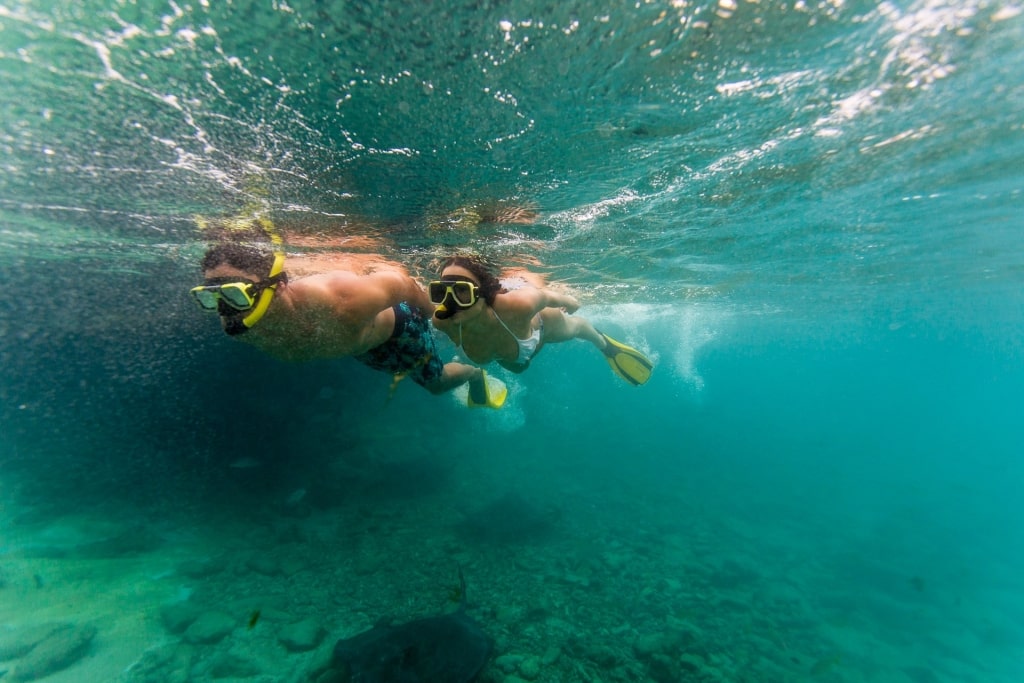
Curacao Sea Aquarium Park
Whether you want to unwind on the beach or hike up a mountain, Curacao has it all. What better way to explore the stunning island than on a cruise to Curacao? You’ll visit other islands in the Southern Caribbean, like Aruba and Bonaire.
Browse cruise itineraries on our website and book your Caribbean getaway today.



